
|
UNESCO (United Nations Educational, Scientific and Cultural Organization) has designated more than 120 world heritage sites in Africa. We bring you now some of the largest and most important of these natural reserves, which protect a huge number of the world's endangered species, and preserve the natural beauty of these areas, which would surely be spoiled otherwise. |
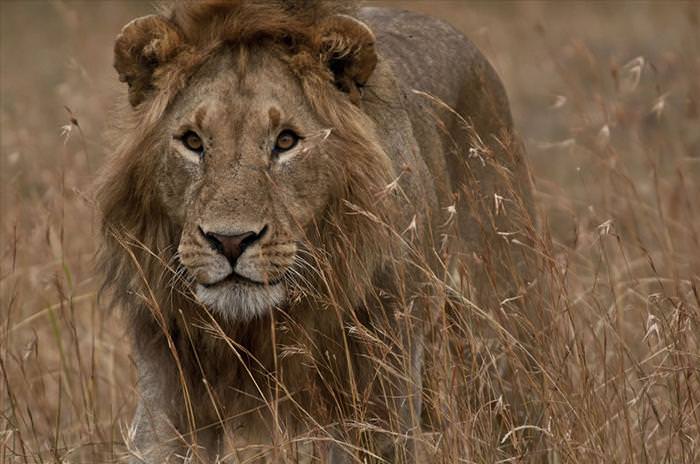 |
| A lion at the Serengeti National Park in Tanzania. This huge savanna spreads over more than 3 million acres (more than 1.4 million ha). Every year, huge herds migrate in search of pasture and water. Millions of wildebeests, hundreds of thousands of zebras and gazelles, and all the predators follow them. This is one of most impressive natural phenomenon in the world. The Serengeti is believed to hold more than 3000 lions, the biggest population in Africa, as well as some 1000 African leopards, buffaloes elephants and black rhinoceros. |
|
|
 |
| The lava lake of the Nyiragongo Volcano is the largest of its kind in the world. |
|
|
 |
| An aerial photograph of an elephant herd making its way through Garamba National Park, one of Africa's oldest national park (since 1980). |
|
|
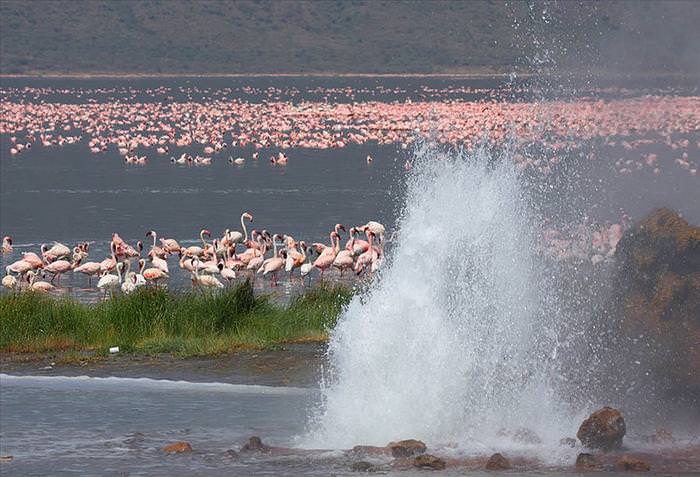 |
| The Great Rift Valley of Kenya has three lakes that contain a huge number of diversified birds, including several endangered species. |
|
|
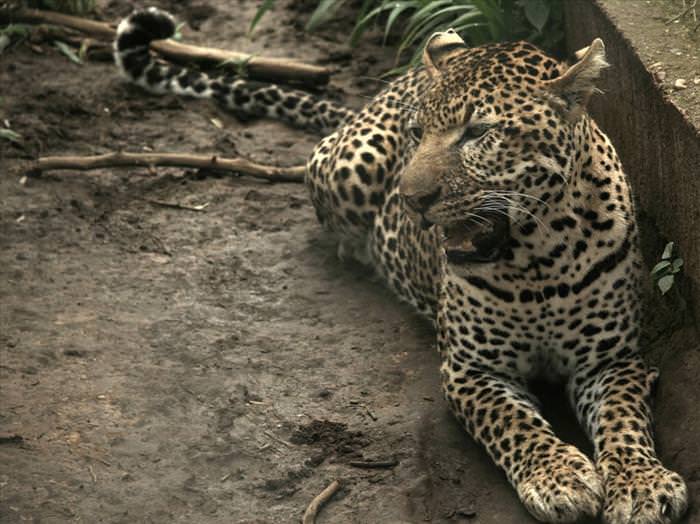 |
| A leopard at Niokolo-Koba National Park in Senegal. This park is known for the high diversity of wild life in it, including more than 80 different mammal species and 330 different species of birds. |
|
|
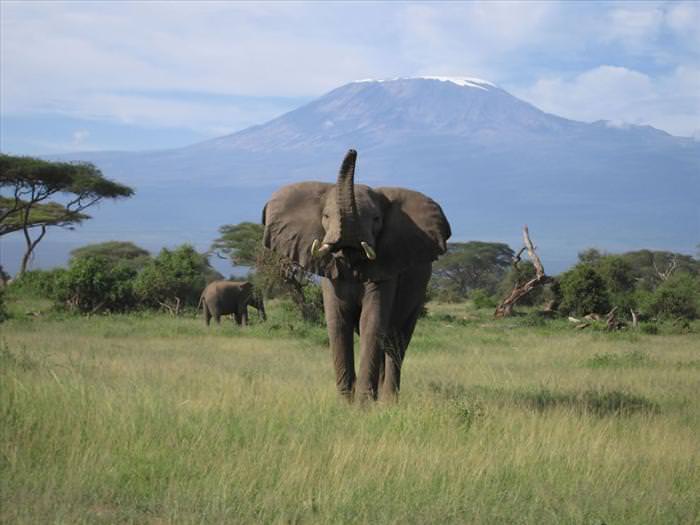 |
| A proud elephant at Kilimanjaro National Park, with the famous mountain in the background, the tallest in Africa. |
|
|
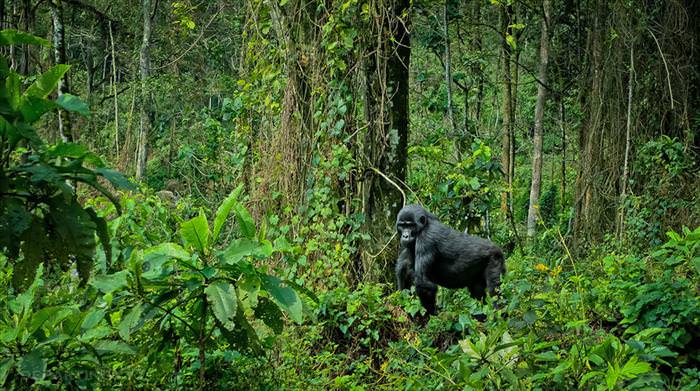 |
| A mountain gorilla at Bwindi National Park in Southwestern Uganda. This park is the home of more than 120 species of mammals, 348 species of birds, 220 of butterflies and 27 of lizards. Many of those, like this gorilla, are endangered species. |
|
|
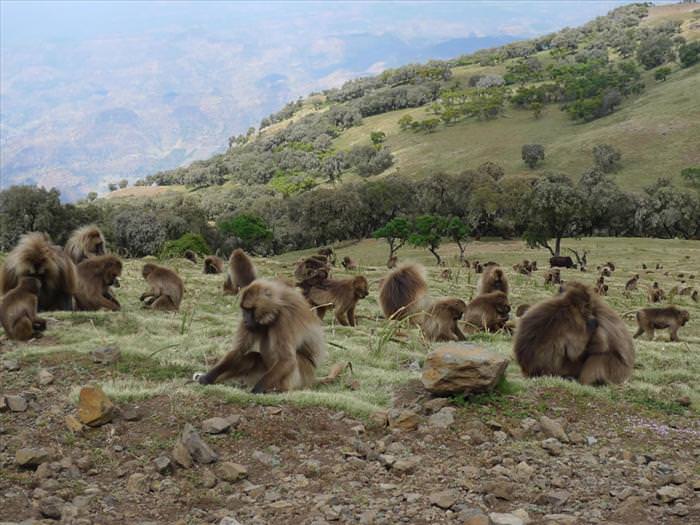 |
| Simien mountains national park spreads over 54,000 acres (22,000 ha) and includes jagged mountain peaks, valleys and the simian mountains themselves. This is home to the endangered species of the Ethiopian wolf, the walia ibex (a wild goat only found in these parts), several species of baboons and wild cats and over 50 species of birds. In the photo, you can see gelada baboons grazing in the mountains. |
|
|
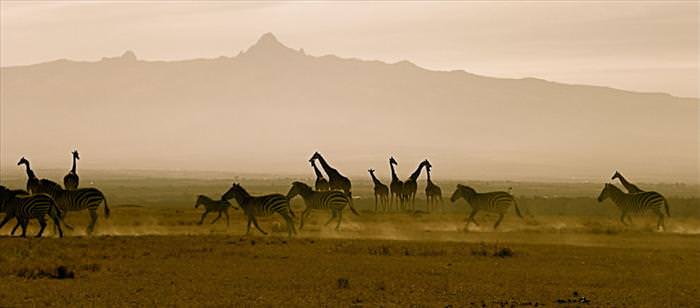 |
| Mount Kenya national park has been a world heritage site since 1997. It surrounds the 5 km tall (17 thousand feet) mountain, the highest in Kenya and 2nd highest (after Kilimanjaro) in Africa. |
|
|
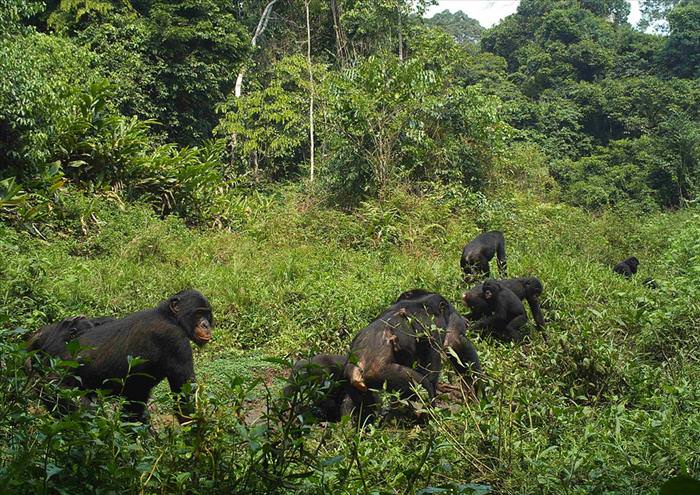 |
| These bonobo monkeys, on the other hand, can be found in Salonga National Park, Africa's biggest tropical rain forest reserve in the Congo. The park is home to bonobos, salonga monkey, forest elephants and African crocodiles. |
|
|
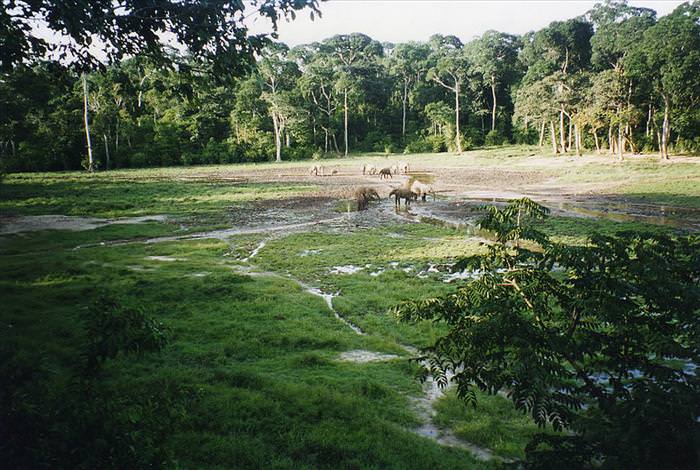 |
| The Sangha Trinational is actually three national parks joined into one. The park is covered in forestland and is home to many a forest elephant, fores buffaloes, giant forest hogs, chimps and many other species of mammals. |
|
|
 |
| The Djoudj National Bird Sanctuary encompasses 40,000 acres (16,000 ha) and it home to a staggering 1.5 million birds, as well as crocodiles, African manatees and other species, all living in the streams, ponds, lakes and swamps of the sanctuary. |
|
|
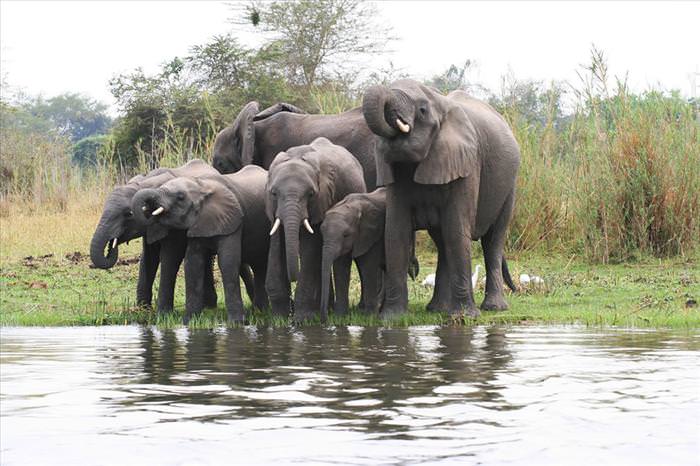 |
| This group of young elephants is slaking their thirst at the Lake Malawi National Park, which was established to protect species of fish and aquatic animals. |
|
|
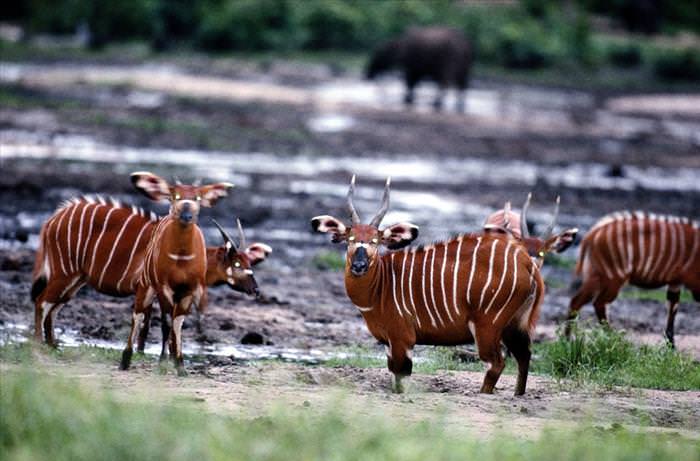 |
| These seemingly possessed red fronted gazelles (just camera glare) live at the Manovo-Gounda national park, which lost over 80% of its inhabitants to illegal poaching. The park is also home to elephants, cheetahs, leopards, wild dogs and buffalo. |
|
|
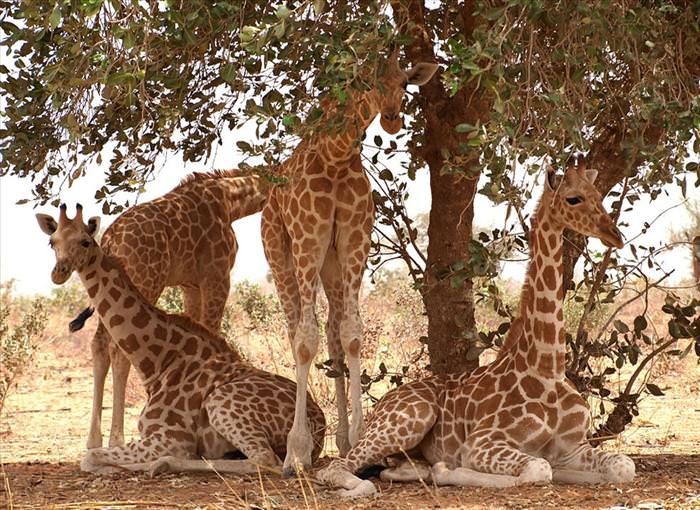 |
| These young giraffes are taking refuge from the sun in the shadow of a tree at the W national park of Niger. |
|
|
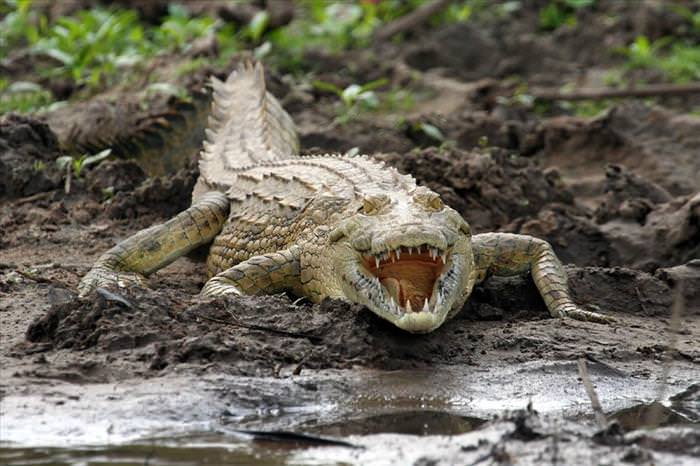 |
| A crocodile at Selous Game Reserve, which encompasses an astounding 12,000,000 acres (5,000,000 ha). |
|
|
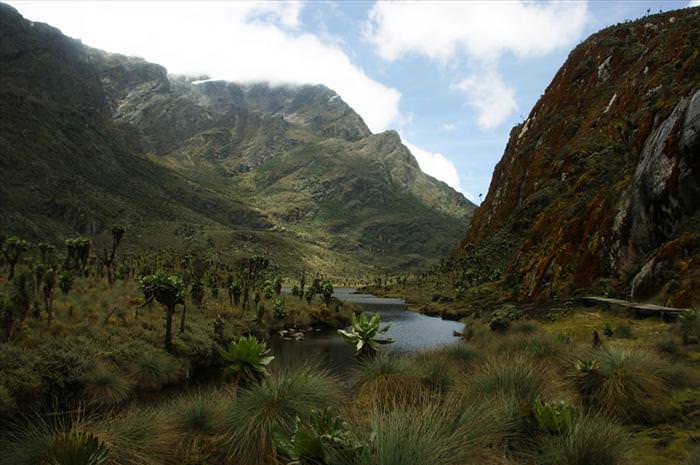 |
| Rwenzori Mountains National Park was made a world heritage site in 1994. The Rwenzori mountains are some of the most permanent and most important sources of water for the River Nile. |
|
|
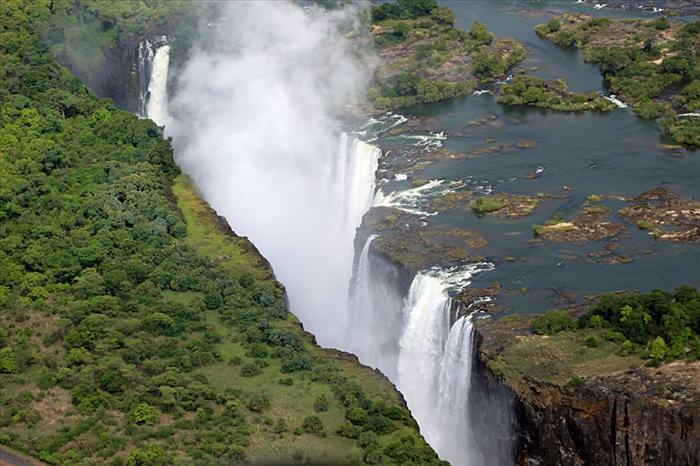 |
| The world's largest sheet of falling waters is the Victoria Falls, "The smoke that thunders". |